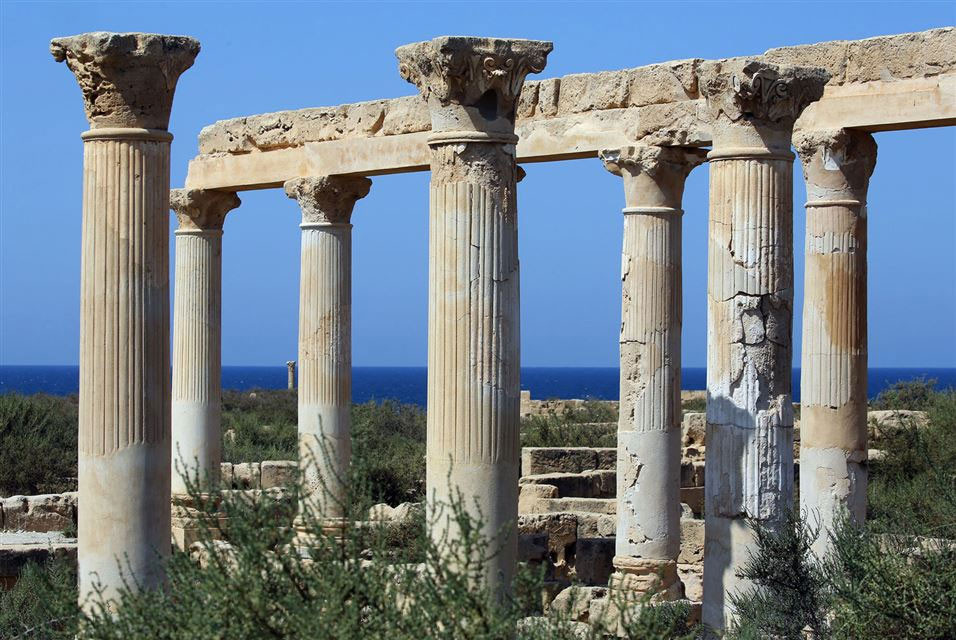
A report by Gerard Huissen
Some weeks ago I read an article on the Archaeology News Network titled ‘Jewel of Roman Empire faces Libya dangers’. It was an article about the Roman ports of Sabratha and Leptis Magna in Libya. These two port cities are, like all other ancient excavations in Libya, violently threatened after the fall and murder of president Gaddafi, and the civil war that followed.
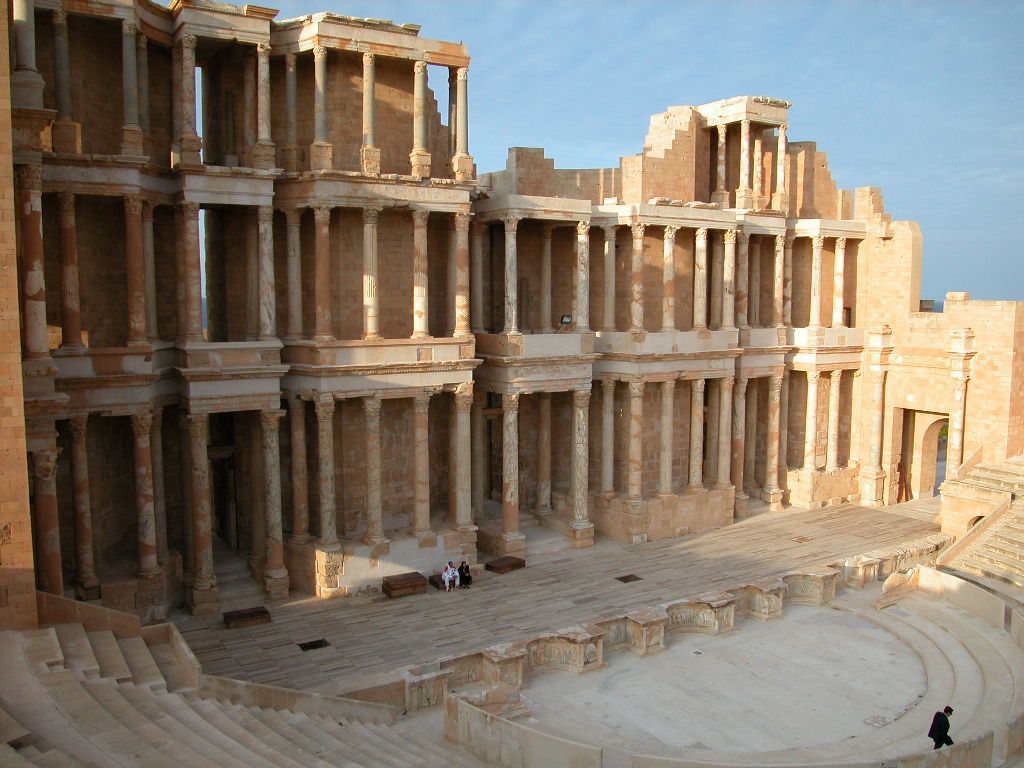
The two port cities, both on the UNESCO world heritage list, are, a year after clashes between rival armed groups, dotted by shell casings and bullets. Locals say, according the article, snipers positioned themselves at the top of the amphitheatre of Sabratha, once a jewel of the Roman Empire. Eighteen centuries after it was built bloodshed was brought back to the arena. Thirty-nine people were killed and 300 wounded in the fighting. The sites are now eerily abandoned and encircled by parched grass and weeds. On the beach near Sabratha boats depart with refugees heading for Italy. Sabratha has become a key departure point for illegal migration. How different this was sixty-five years ago.
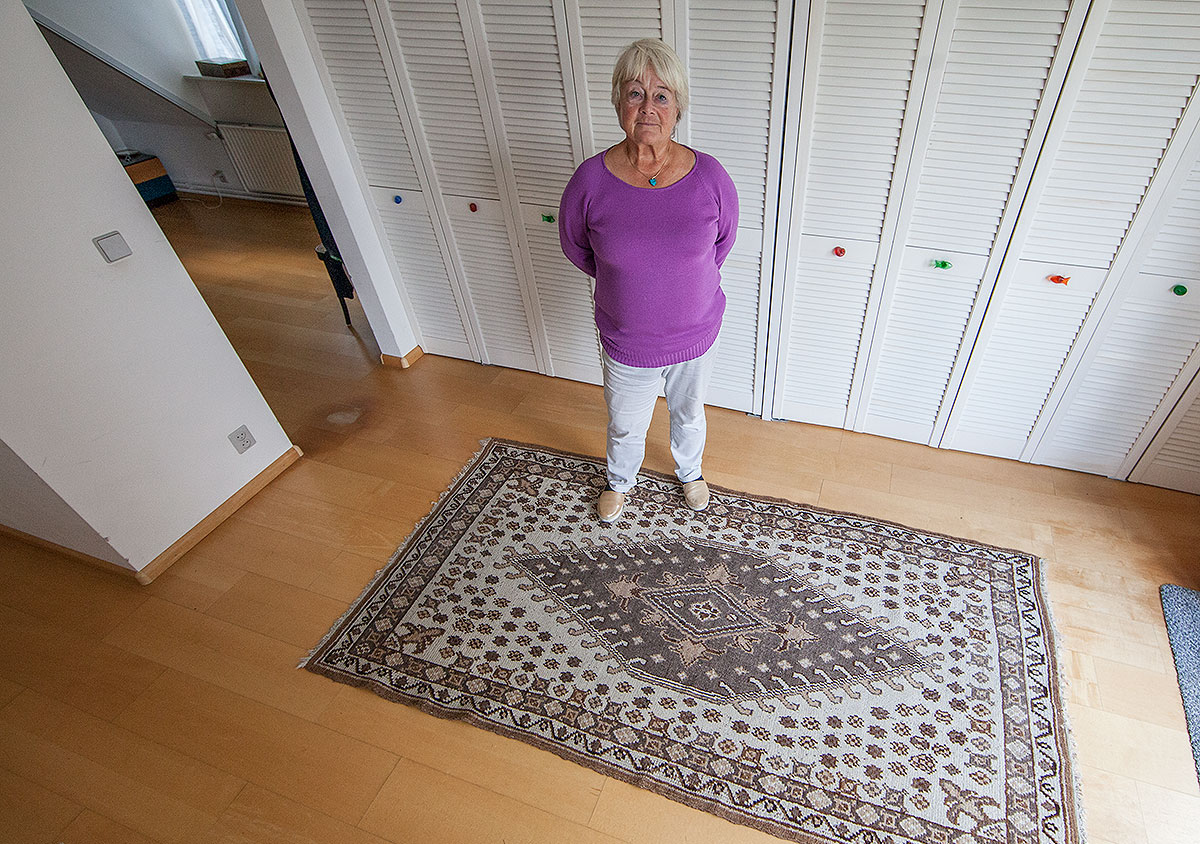
her father.
A Roman port as an amusement park for children
In Holland, where this digital magazine is produced, the editors were often assisted by several unpaid volunteers. One of these volunteers is Simona Bombarda, an Italian woman living in Holland but born in Libya. Last year she told me that she, as a child, often visited the excavations of Sabratha and Leptis Magna on Sundays together with her family. Not because they were especially interested in antiquities, but to play and to have a picnic between the ruins. It was a long time ago and all the details were not clear anymore, but her younger sister Francesca, who lives in Rome, probably had a better memory and also some pictures their father Maurizio Bombarda shot in those days. So, on my way to Rome to hear what she could tell me. But let me tell first, perhaps unnecessarily, something about the background of Libya.
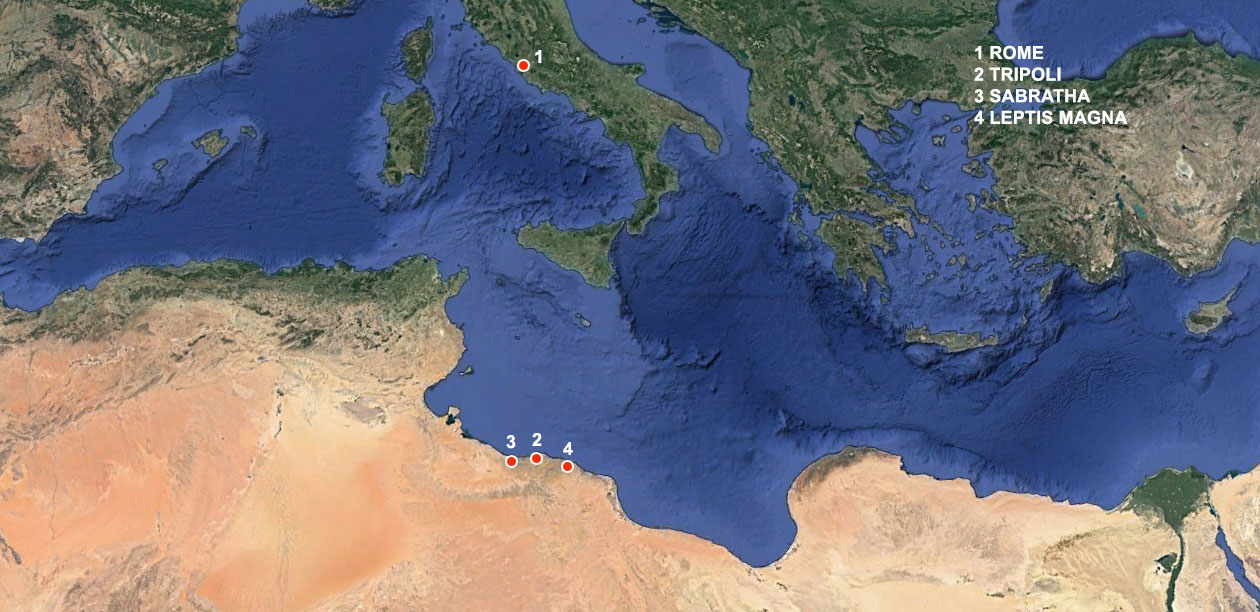 After the fall of the Roman Empire (ca 670 AD), the area of Libya came under the influence of the Islam and became a part of the Ottoman Empire in 1551. In the Italo-Turkish War (1911-12), between the Ottoman Empire and Italy, Italy conquered the three provinces Cyrenaica, Tripolitania and Fezzan and joined them to form the colony of Italian Libya.
After the fall of the Roman Empire (ca 670 AD), the area of Libya came under the influence of the Islam and became a part of the Ottoman Empire in 1551. In the Italo-Turkish War (1911-12), between the Ottoman Empire and Italy, Italy conquered the three provinces Cyrenaica, Tripolitania and Fezzan and joined them to form the colony of Italian Libya.
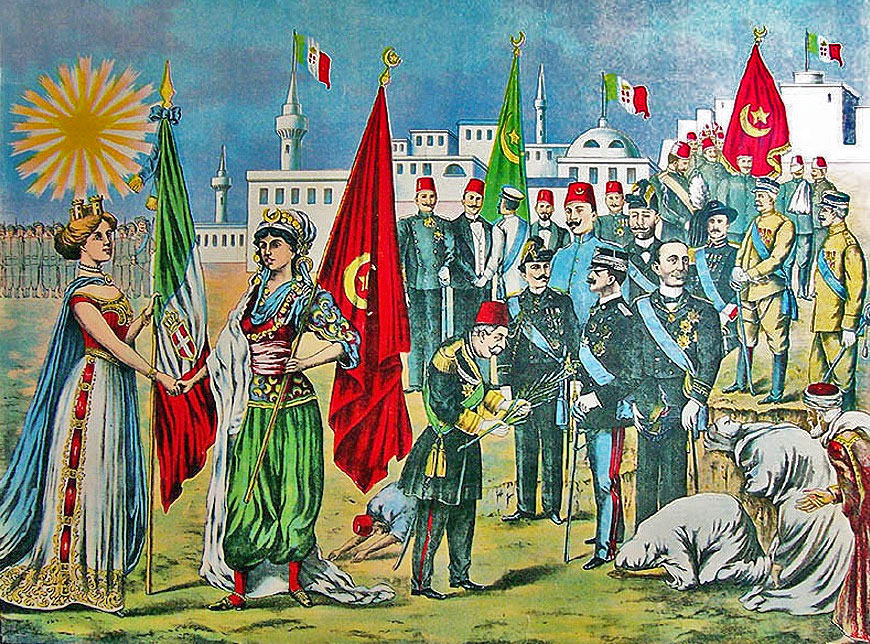
Encouraged by Mussolini 20,000 Italian emigrants arrived in October 1938, to build an existence in the desert land as farmers. This "ventimilli" formed, in the perception of the fascists, the forefront of what in the 1960s had to become a core population of 500,000 people.
During the second world war the British army expelled the Italians and their German allies from the country. The provinces of Tripolitania and Cyrenaica in the north came under British military administration, while Fezzan in the south was ruled by the French military. This continued under a mandate of the United Nations till 1950. On the 24th of December 1951 the UN, in cooperation with the local tribes, founded the independent kingdom of Libya with Idris I as their first king. In 1959 significant oil resources were discovered in Libya. One of the world’s poorest countries became suddenly very rich. However, discontent grew in some Libyan factions, about the fact that the country's wealth was concentrated in the hands of King Idris.
On the first of September 1969 a coup, led by Colonel Muammar al-Gaddafi, took place. Gaddafi established a national and pan-Arab dictatorship with an Islamic slant. Oil production was nationalized and the English and American engineers had to leave the country. The 12,000 descendants of the "ventimilli" hastily had to leave the country by October 1970. In addition, all Italian possessions in Libya were expropriated. The family Bombarda had to leave the country too.
Interview with the sisters Bombarda
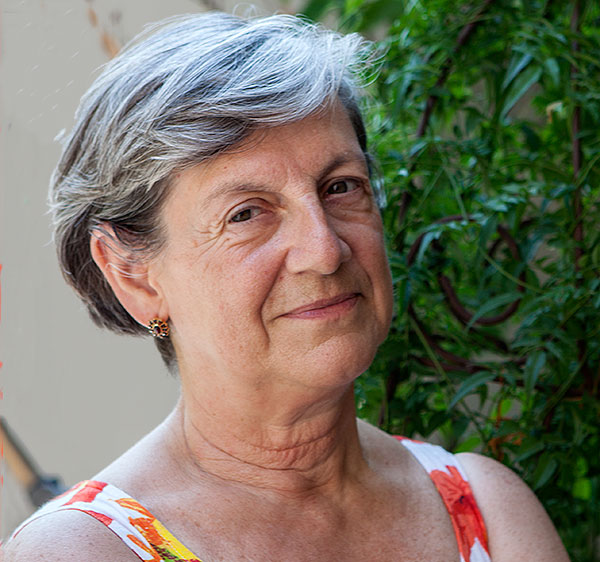
Francesca: ”We all were born in Tripoli because our parents lived there already. My father, Maurizio Bombarda, was already born in Libya (before the arrival of the "ventimilli") and worked in Tripoli where we grew up. In 1970 we returned to Italy because Gaddafi decided to send all the Italian people living in Libya out of the country.”
Simona: "Our father was born in the colonial time. We, the children, were hardly aware of that time and we felt like part of the local population. Libya was our ‘home’."
Francesca: “In Libya, especially for children, there was almost nothing to do. Therefore our parents took us often on Sundays to Sabratha or Leptis Magna. We played and had a picnic between the ancient ruins. It was a beautiful place. A place to love, to admire, especially during springtime. In the summer it was too hot, but in spring and winter, on nice days..., it was our amusement park where we played on the ancient walls, the old ruins.”
Were there more people?
Francesca: “Most of the time we were part of a whole company. A group of friends with their children, baby’s, family. The parents served lunch. People liked to walk through the ruins, eat together and after that...they went home again.”
Simona: “Often our father took photographs. He was very impressed by the mosaic motifs he saw in Sabratha. At home I have still a carpet made by my father with motifs he picked up there. For nostalgic reasons I always have used the carpet, therefore it’s a bit worn out. But yes, the memory remains.”
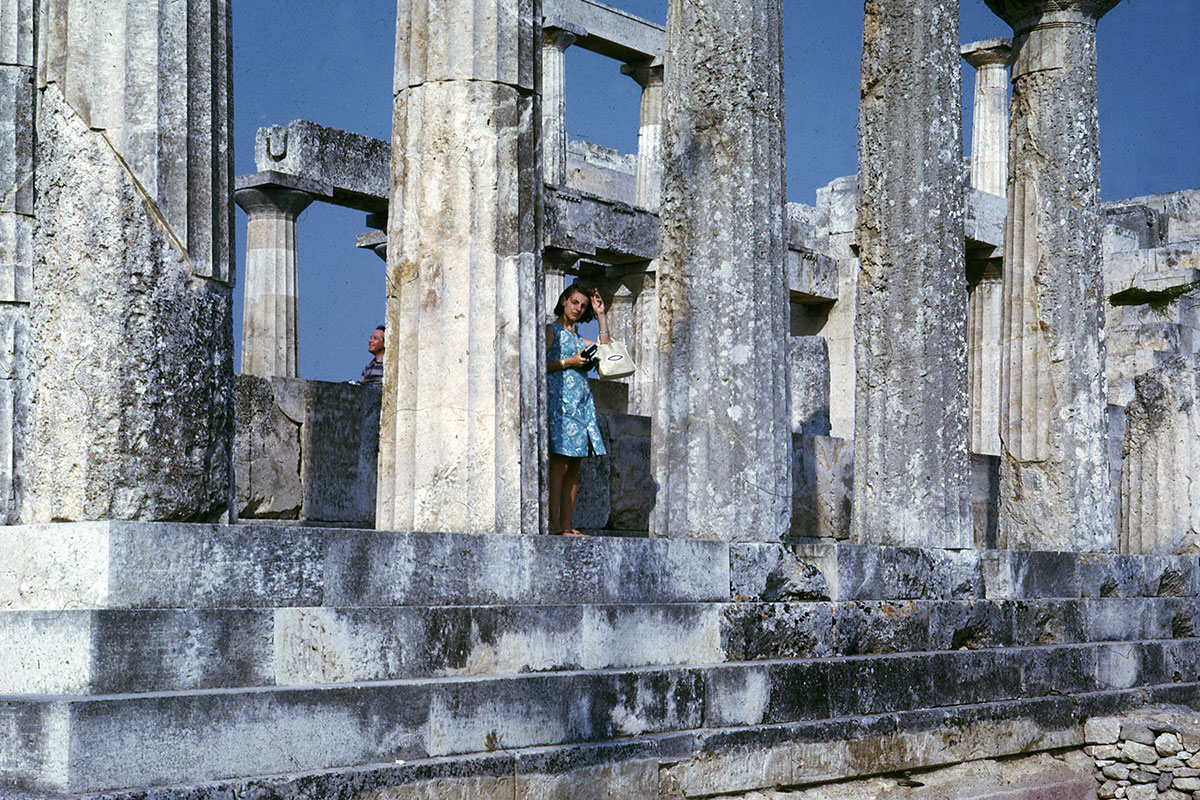
Francesca: “At Sabratha especially the theatre was important. Usually the Italian Cultural Centre organized plays during the summer evenings. One of the most beautiful plays I remember was, I think, “Medea” by Euripides. Music concerts I can’t remember; there were mainly classical drama’s.”
Francesca: “I left Libya at the age of 13 and never went back again.”
What do you know about the actual harbours of Sabratha or Leptis Magna?
Francesca: “I don’t remember them at all. Also in Leptis I can’t remember a harbour. As far as I know, I have never seen a harbour.”
Simona: “I can’t remember it either. Leptis was large and we played only on a small piece in the centre.”
Francesca: “Indeed, the biggest part of the city was not alongside the sea. We played around the city forum, the place with the most important ruins. The sea was far away. And maybe the harbour could not be seen any more in those days, due to silting up by the sediment of the river that flowed towards the harbour or silting up in general. No, I don’t think you can recognize the form of the harbour anymore.”
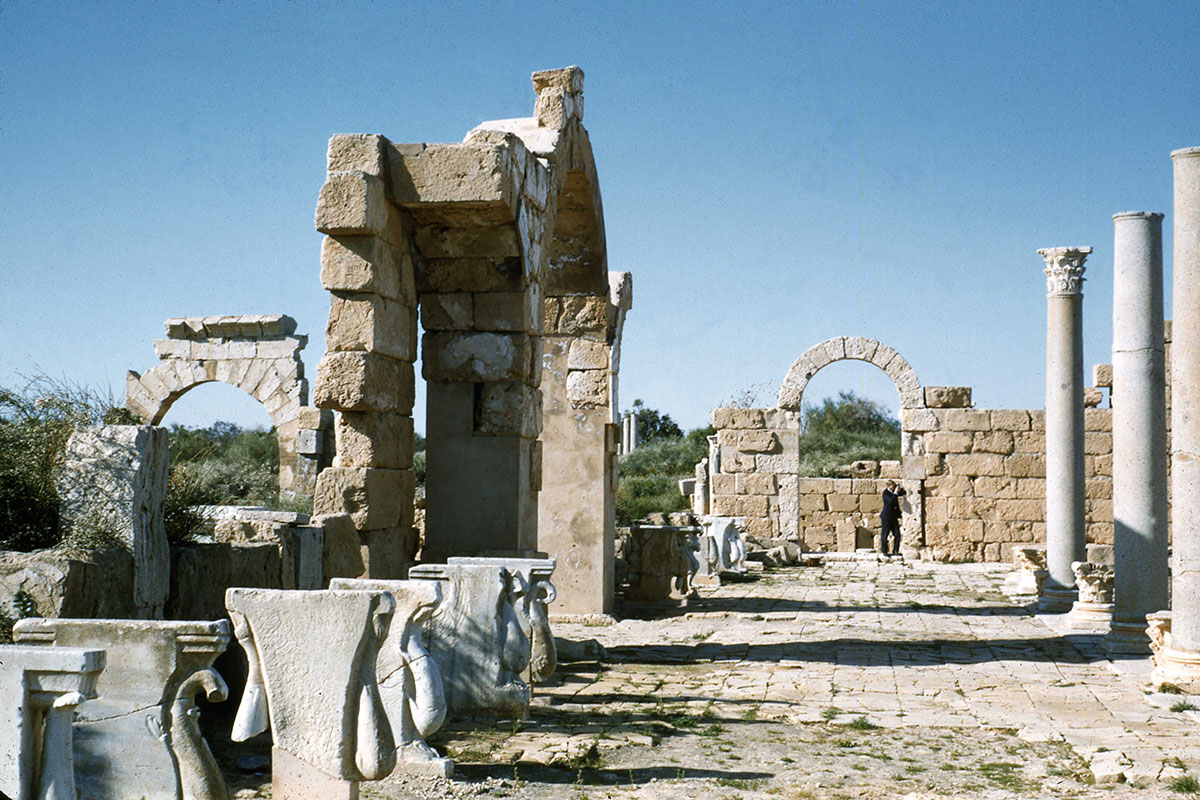
As far as the latter is concerned, both ladies were wrong as we have seen in the article made by Ahmed Fergiani, “Leptis Magna, gate to Africa”.
Francesca had found some old photographs which her father made in that time (see photos 5 and 6).
In the meanwhile Unesco declared Sabratha to be at risk in July 2016, along with four other Libyan sites on its World Heritage list. The UN's cultural organisation based its decision on two factors: "damage already caused" and “vulnerability to future destruction”. It noted that "armed groups are present on these sites or in their immediate proximity". Experts fear worse is to come for the country's historic sites, as armed groups continue to vie for ascendancy. “Libya's archaeological heritage is at great risk”, warns Mohamad al-Chakchouki, head of the North African country's department of antiquities.
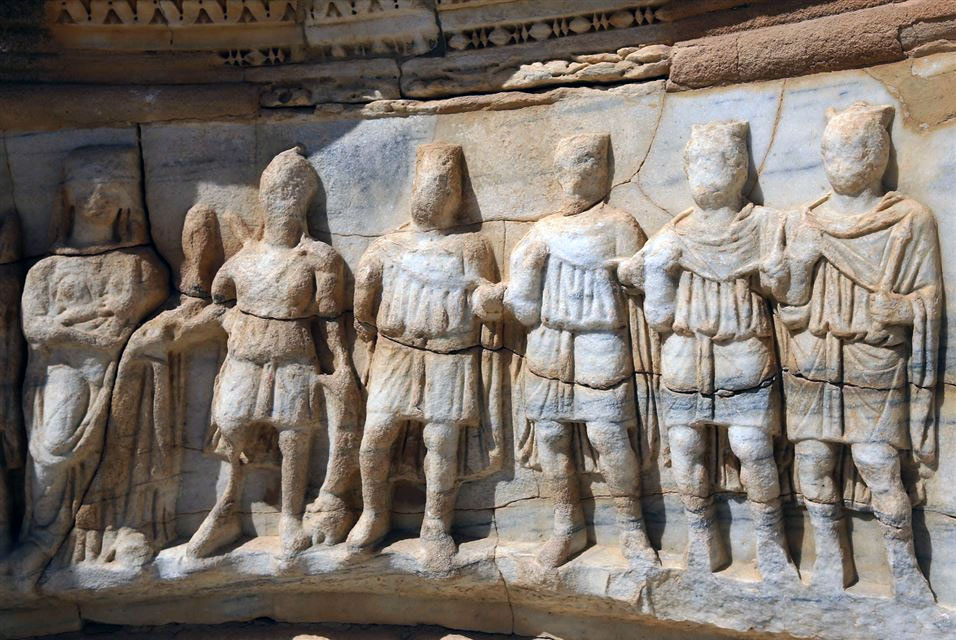
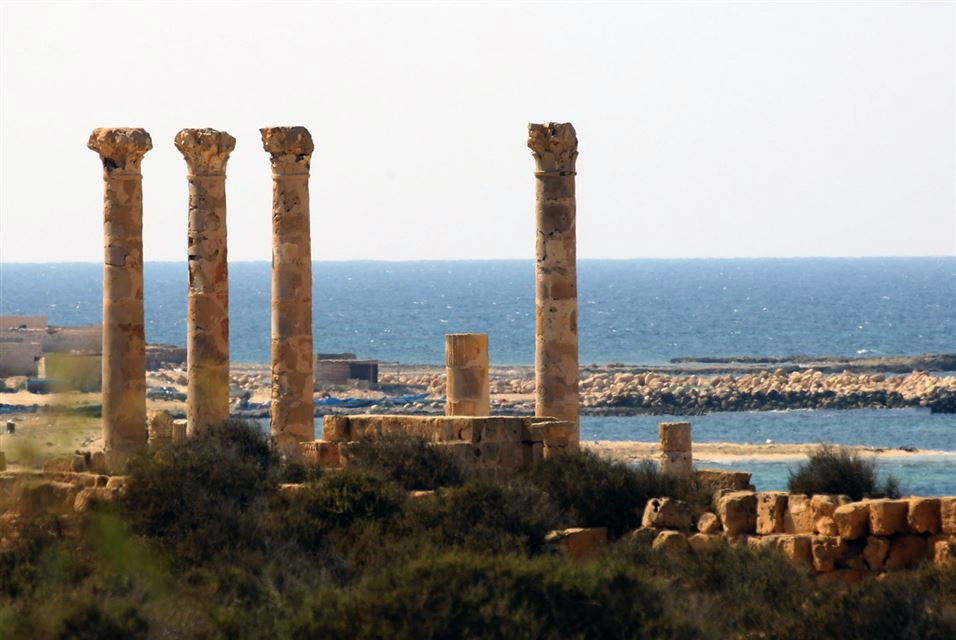
The conservation of sites was once entrusted to experts from western countries, but these experts have not travelled to Libya for four years, because of the chaos and insecurity. A Spanish archaeological mission recently visited Sabratha and signed an agreement to restore some areas, including the theatre. “But completion of the work depends on the security situation", said Mohamed Abu Ajela, an official at the city's office of antiquities.







 We are committed to providing versions of our articles and interviews in several languages, but our first language is English.
We are committed to providing versions of our articles and interviews in several languages, but our first language is English.